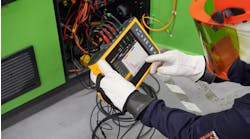Record-breaking heat waves are making headlines and straining economies around the globe, with no signs of cooling down in the immediate future. Beyond the impact on human lives, extreme heat is taking a major toll on data center operations and infrastructure, from outages and disruptions at data centers in the United Kingdom, to reduced production at power plants in France, to concerns over water usage in drought-affected areas in the United States and across the globe.
In late August, global digital infrastructure and continuity solutions provider Vertiv issued recommendations to data center operators and associated businesses to help them navigate these challenges.
To keep systems cool and help ensure data center availability, Vertiv experts recommend these immediate actions:
- Depending on the data hall load, run as many units as possible to reduce the load on each cooling unit. Typically, an organization would run all redundant units, but if the IT load is not 100%, one should run enough units to get the per-cooling unit as close as possible. This keeps the refrigerant pressures lower so there is not a risk of trips on high pressure with the high ambient temperature. It also provides a more efficient operating point.
- Schedule regular preventive maintenance quarterly. For compressor-based units, Vertiv recommends quarterly or more frequent cleaning of the condenser coils. The lack of proper and regular cleaning of the condenser coil can cause more of a reduction in the overall thermal unit capacity than the ambient temperature itself. Additionally, properly maintaining the refrigerant charge level helps to enable the design capacity and operating efficiency to function smoothly. A refrigerant charge that is too low or too high can cause operational inefficiencies.
“The unprecedented temperatures we’re seeing across the globe are putting increased pressure on data center operators and infrastructure providers, challenging them to maintain reliability and connectivity,” said Steve Madara, vice president for thermal sales at Vertiv. “Extreme weather events underscore the importance of a robust preventive maintenance and cleaning plan, tailored to the specific conditions of an operator’s region. Data center operators may need to be prepared for operating expense trade-offs to compensate for oversizing capacity.”
He added that a qualified data center services provider can assist in creating a maintenance/services plan to meet the “demands of today’s heat waves and tomorrow’s uncertain climate.”
Learn from Middle Eastern, African countries
As the planet continues to warm and the climate crisis intensifies, extreme heat events will become even more commonplace. Short-term actions will need to be accompanied by more long-term, systemic changes in the industry.
“As an industry, we should look to and learn from regions such as the Middle East, Africa and Australia, which have already adapted to high temperatures for much of the year,” Madara said. “When we do, it’s clear the status quo won’t carry us into the future. We need to reassess rooftop space planning and design our data center infrastructures to withstand higher heat loads, rethinking the placement of infrastructure systems in addition to capacity.”
Other long-term action best practices and advice from Vertiv experts include:
- Consider different types of cooling systems, including immersion cooling, water-free cooling and evaporative free-cooling systems designed to deliver reliability and efficiency in high-temperature environments.
- If relying on solar cells as an energy source, account for the reduction of the efficacy of solar cells as ambient temperatures increase.
- Rather than solely relying on historical data to determine data center capacity — data that fails to account for today’s extreme temperatures — use predictive modeling.



